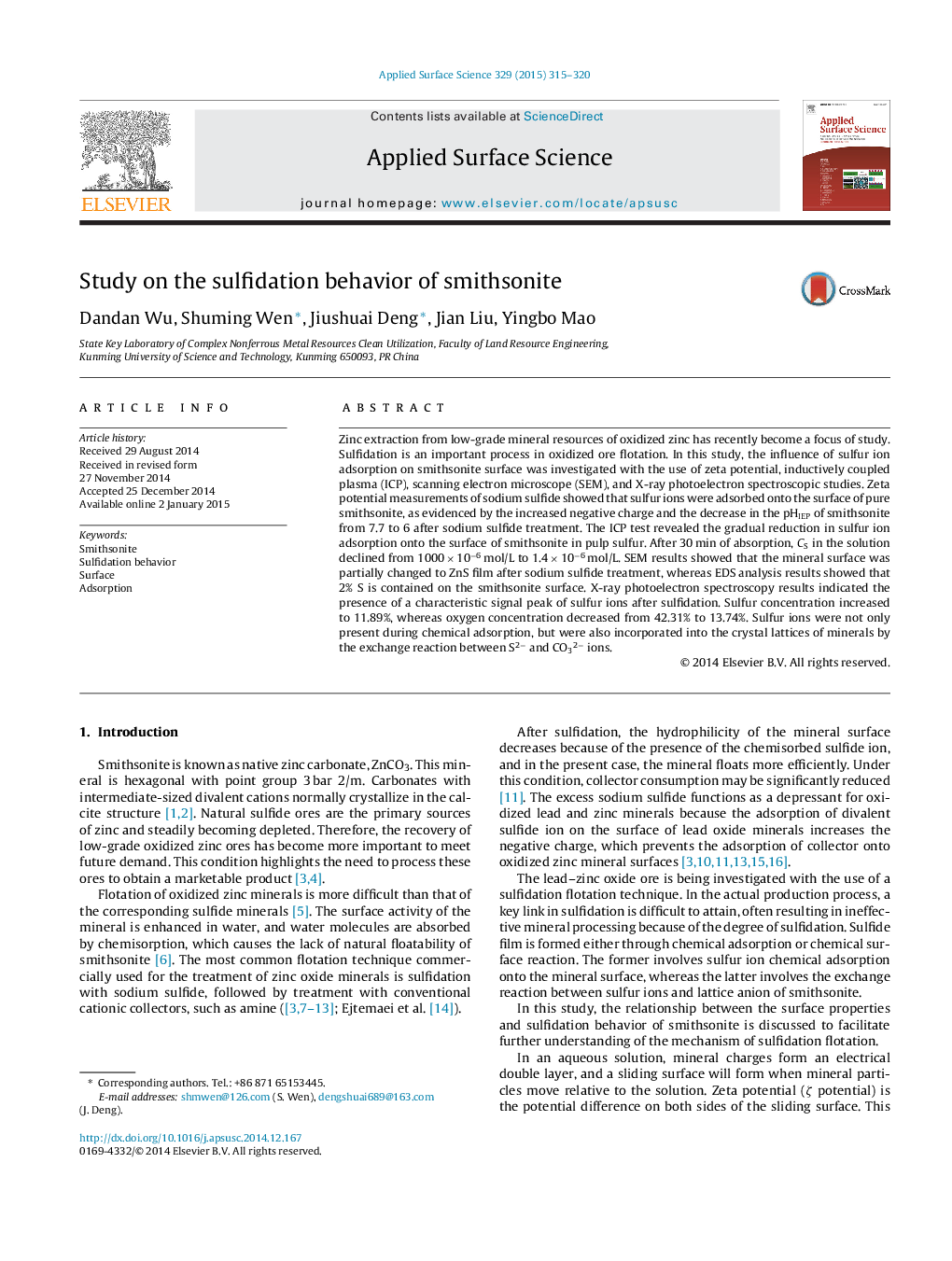| Article ID | Journal | Published Year | Pages | File Type |
|---|---|---|---|---|
| 5359639 | Applied Surface Science | 2015 | 6 Pages |
Abstract
Zinc extraction from low-grade mineral resources of oxidized zinc has recently become a focus of study. Sulfidation is an important process in oxidized ore flotation. In this study, the influence of sulfur ion adsorption on smithsonite surface was investigated with the use of zeta potential, inductively coupled plasma (ICP), scanning electron microscope (SEM), and X-ray photoelectron spectroscopic studies. Zeta potential measurements of sodium sulfide showed that sulfur ions were adsorbed onto the surface of pure smithsonite, as evidenced by the increased negative charge and the decrease in the pHIEP of smithsonite from 7.7 to 6 after sodium sulfide treatment. The ICP test revealed the gradual reduction in sulfur ion adsorption onto the surface of smithsonite in pulp sulfur. After 30Â min of absorption, CS in the solution declined from 1000Â ÃÂ 10â6Â mol/L to 1.4Â ÃÂ 10â6Â mol/L. SEM results showed that the mineral surface was partially changed to ZnS film after sodium sulfide treatment, whereas EDS analysis results showed that 2% S is contained on the smithsonite surface. X-ray photoelectron spectroscopy results indicated the presence of a characteristic signal peak of sulfur ions after sulfidation. Sulfur concentration increased to 11.89%, whereas oxygen concentration decreased from 42.31% to 13.74%. Sulfur ions were not only present during chemical adsorption, but were also incorporated into the crystal lattices of minerals by the exchange reaction between S2â and CO32â ions.
Keywords
Related Topics
Physical Sciences and Engineering
Chemistry
Physical and Theoretical Chemistry
Authors
Dandan Wu, Shuming Wen, Jiushuai Deng, Jian Liu, Yingbo Mao,
